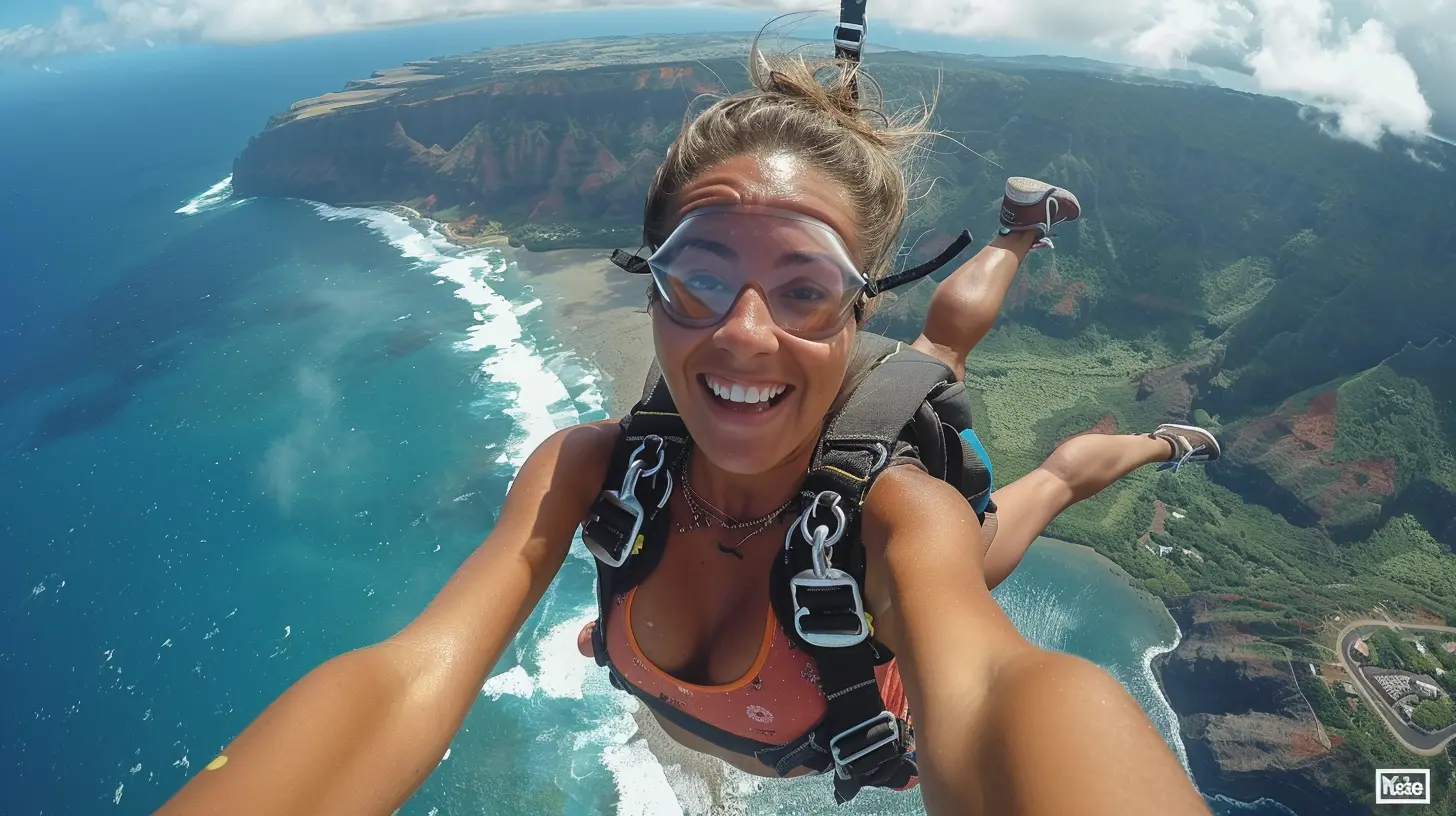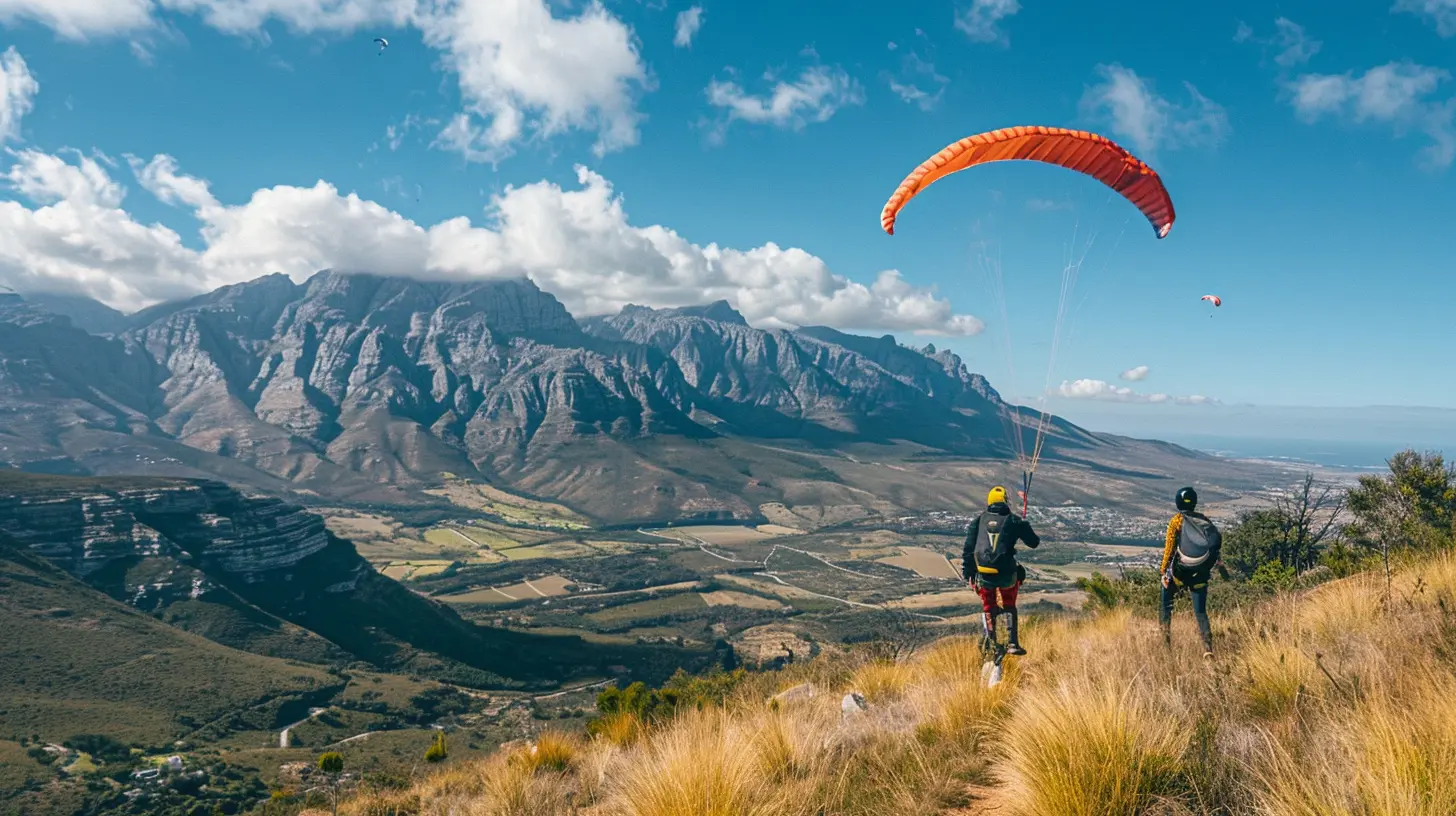Exploring the Heights: Your Ultimate Guide to Skydiving
10 September 2025
Ever looked up at the clouds and thought, “Hey, wouldn’t it be wild to jump out of a plane?” You’re not alone. Skydiving has gone from something only adrenaline junkies do to a rite of passage for thrill-seekers everywhere. Whether you're ready to book your first tandem skydive or just curious about how it all works, this guide's got you covered — no fluff, just the real deal on what it’s like to jump into the sky.

Table of Contents
- What Is Skydiving, Really?- Why People Jump from Planes (And Keep Coming Back)
- Types of Skydiving You Can Try
- First-Timer’s Guide: Tandem Skydiving
- What’s It Feel Like to Freefall?
- Physical and Mental Prep Before the Jump
- What to Wear and What to Bring
- Skydiving Safety: Is It Actually Safe?
- How Much Does Skydiving Cost?
- Where to Skydive: Best Destinations Worldwide
- Tips to Make the Most of Your First Jump
- Frequently Asked Questions
- Final Thoughts

What Is Skydiving, Really?
Let’s cut through the noise. Skydiving, at its core, is jumping from an aircraft with a parachute and (ideally!) landing safely on the ground. Sounds nuts, right? But it’s actually a well-orchestrated sport, combining science, skill, and a splash of bravery. The experience involves a brief freefall — usually 30 to 60 seconds — followed by a serene glide back to earth once the parachute is open.
Why People Jump from Planes (And Keep Coming Back)
It's not just about the rush — though that’s definitely part of it. Skydiving gives you a perspective on life that few other things can. You're literally above everything, and in that moment, problems feel small. It's a mix of fear, excitement, clarity, and freedom all rolled into one.Some folks skydive for the thrill, others for the community. And yeah, some to tick it off their bucket list. But once you land — grinning ear to ear, heart pounding — don't be surprised if you start planning your next jump.

Types of Skydiving You Can Try
Depending on your experience level and how much control you want over the process, there are a few different ways to skydive:Tandem Skydiving
Perfect for beginners. You’re strapped to a pro who does most of the work — you just enjoy the ride.Static Line Jump
Used mostly for military training but available in some civilian centers. Your chute opens automatically after you jump.Accelerated Freefall (AFF)
Want to solo skydive without years of training? AFF is a fast-track program where you learn everything from controlling your body in freefall to deploying your own parachute.Wingsuit Flying
Think flying squirrel. This advanced form of skydiving uses a special suit to glide horizontally and requires hundreds of jumps before you can even try it.Formation Skydiving
This is the team sport of the sky. Jumpers create shapes and patterns in freefall — think synchronized swimming, but way cooler.First-Timer’s Guide: Tandem Skydiving
So you're ready to go for it. First jump? You'll most likely do a tandem skydive. Here's what to expect:1. Sign the Waiver. Yes, it's a legal thing. Skydiving is risky, and you’ll need to acknowledge that.
2. Training. They’ll walk you through body position, what to expect in the air, and how to land safely.
3. Gear Up. You’ll get a jumpsuit, goggles, and a harness that connects you to your instructor.
4. Board the Plane. Things get real here. Butterflies? Totally normal.
5. Jump. The door opens, your heart races, and boom — you're out!
6. Freefall. About 30–60 seconds of pure, unfiltered thrill.
7. Canopy Ride. Once the chute deploys, you float like a feather for 5-7 minutes.
8. Landing. Controlled and usually smoother than you'd expect.
What’s It Feel Like to Freefall?
Okay, let’s talk sensations. First off, it doesn’t feel like falling. There's no stomach-drop roller coaster vibe. It's more like floating — aggressively. Wind rushes past you at 120 mph, your cheeks flap (not a great look, but it’s hilarious), and all you can think is “HOLY $#*& THIS IS AWESOME!”Physical and Mental Prep Before the Jump
You don’t need to be an Olympic athlete, but you should be in decent health. Here’s how to prep:- Sleep Well. Trust us, it helps with nerves.
- Eat Something. Light meals work — you don’t want to be starving or bloated.
- Stay Hydrated. Dehydration is surprisingly common in skydiving.
- Avoid Alcohol/Drugs. No brainer, but worth repeating.
- Get Your Mind Right. Some nerves are fine. Freaking out? Totally normal. Trust your instructor — they’ve done this thousands of times.
What to Wear and What to Bring
Keep it simple. Here’s what works best:- Clothing: Athletic wear and closed-toe shoes. No flip-flops or boots.
- Glasses/Contacts: You can wear them, goggles go over.
- Camera: Most drop zones don’t allow you to bring your own during a tandem (liability reasons). Book a photo/video package instead.
Skydiving Safety: Is It Actually Safe?
Great question — and yes, statistically, it’s safer than you think. According to the United States Parachute Association (USPA), the chance of a fatal injury is about 0.00039%. You’re more likely to get hurt driving to the drop zone.Gear is rigorously tested, instructors go through intense training, and regulations are super strict. Still, it’s not without risk — but those risks are minimized through high standards and constant oversight.
How Much Does Skydiving Cost?
Let’s talk money. Prices vary depending on location, the type of jump, and whether you want photos or video.- Tandem Jump: $200–$300
- Photo/Video Package: $80–$150 extra
- AFF Course: $1,200–$2,000 (but includes multiple jumps and training)
Pro tip: If you're hooked after your first jump, many drop zones offer package deals for returning jumpers or AFF programs.
Where to Skydive: Best Destinations Worldwide
If you’re gonna leap from a plane, you might as well land somewhere stunning. Here are some top spots:Interlaken, Switzerland
Surrounded by the Alps — it's like jumping into a postcard.Queenstown, New Zealand
Adventure capital of the world. Enough said.Dubai, UAE
Skydive over the Palm Islands and feel like James Bond.Hawaii, USA
Ocean views, lush green mountains, and tropical vibes.Victoria Falls, Zambia/Zimbabwe
One of the Seven Natural Wonders of the World — and you get a bird’s eye view.
Tips to Make the Most of Your First Jump
- Don’t Overthink It. The more you think, the scarier it feels. Stay in the moment.- Listen to Your Instructor. Seriously, they know what they’re doing.
- Smile for the Camera. Even if your face is flapping in the wind.
- Ask Questions. The more you know, the calmer you’ll feel.
- Celebrate After. Whether that’s with a beer or just a quiet fist pump, soak it in. You did something epic.
Frequently Asked Questions
Is There a Weight Limit?
Yes. Most centers have a limit around 220–240 lbs. It’s about safety and equipment ratings.Do You Need Any Experience?
Nope. That’s the beauty of tandem skydiving — complete beginners welcome.What If The Parachute Doesn’t Open?
Good question. All rigs are required to have a reserve parachute, plus an automatic activation device in case the skydiver doesn’t pull it themselves.At What Age Can You Skydive?
In most countries, the minimum age is 18. Some places outside the U.S. may allow younger jumpers with parental consent.How Long Does the Whole Experience Take?
Plan for about 3–4 hours, from check-in to landing. Sometimes longer if winds are strong or there’s a wait.
Final Thoughts
Skydiving isn’t just a bucket list activity — it’s a perspective shift. It shows you what you’re capable of when you face fear head-on. Whether you do it once or get hooked for life, one thing’s for sure: you’ll never forget the day you flew.Ready to take the leap? The sky — quite literally — is the limit.
all images in this post were generated using AI tools
Category:
Adventure SportsAuthor:

Tracie McAdams
Discussion
rate this article
1 comments
Bennett McConnell
Great article! I love how you covered essential tips for beginners and highlighted the breathtaking views. It would be helpful to include info about the best locations and weather conditions for skydiving. Looking forward to reading more about adventure sports!
September 10, 2025 at 3:15 AM

Tracie McAdams
Thank you for your feedback! I’ll definitely consider adding information about the best locations and weather conditions in future articles. Stay tuned for more on adventure sports!


